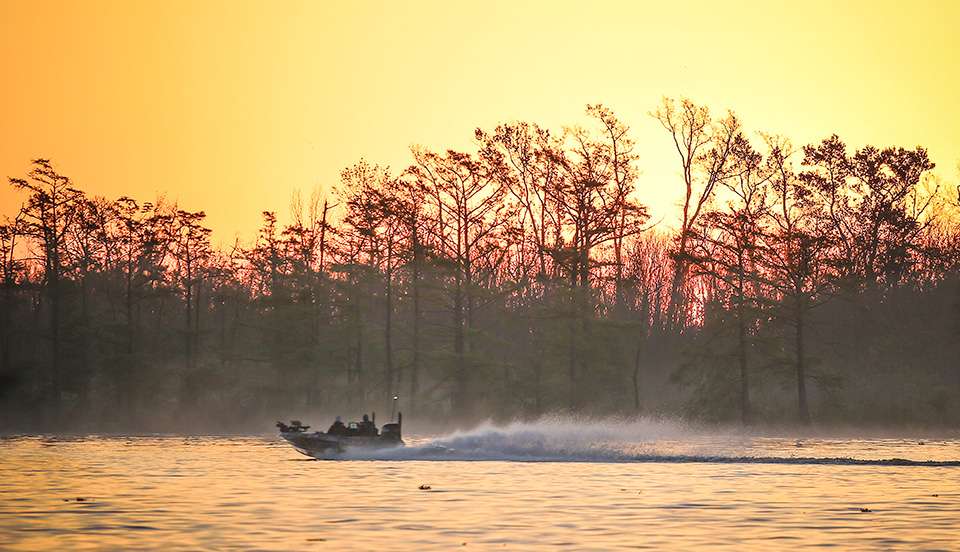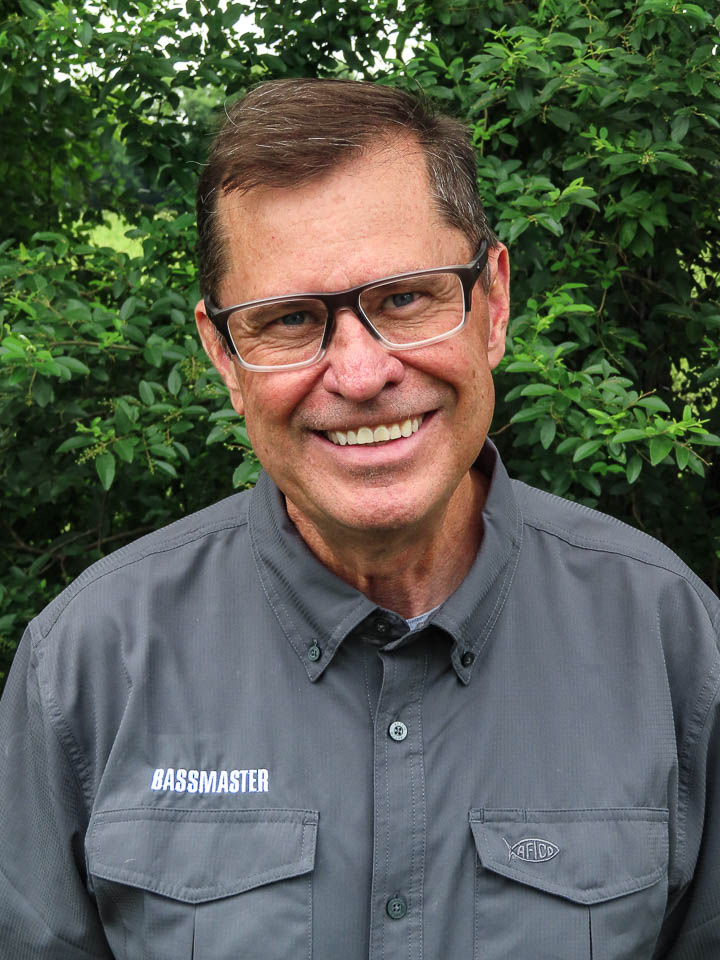
ORANGE, Texas —Open up the rod and tackle storage compartments in Jason Christie’s boat and you will be in for a surprise.
“I removed over 150 pounds of tackle and gear to lighten the load,” he said. “Every drop of fuel counts this week.”
This week Christie is fishing the Dovetail Games Bassmaster Elite at Sabine River sponsored by Bassmaster Fishing 2022 —the official video game of B.A.S.S. Inside the boat are four spinnerbaits, one jig, and one soft plastic frog, all of it fitting inside one soft tackle pouch. A few rod-and-reel combos complete the tackle and gear inventory.
Christie, the leader after Friday, was atop the leaderboard with 28 pounds, 15 ounces. Just behind him in second is Brock Mosley with 27-14. What makes this storyline unique is the distance both anglers are traveling to catch their fish. By water, roughly 200 nautical miles separate them, but more importantly, both are making the longest runs of anyone else in the field.
Making those long runs requires a lot of fuel. That makes fuel economy more important than any lure, tactic or mental strategy than anything else. Here is a breakdown of how each angler is approaching the long runs for his respective game plan.
Christie: All about GPH
The reason why Christie chose to lighten the load is the distance required to reach his fishing area. The run extends from the City of Orange Boat Ramp northward through a serpentine route up the Sabine River to near Toledo Bend Dam. The unmarked channel is laden with underwater hazards, including submerged trees, large driftwood, and more. There is no straight-away path. Christie doesn’t know the mileage but the commute takes 1 hour, 50 minutes to achieve.
Above all else, there is nowhere to refuel.
While making the run, Christie keeps a constant eye on the screen of his Garmin GPS fishfinder, but not for the reasons you might think. Christie’s rigging setup includes an NMEA gateway interface and cable that connects his fishfinder to the Yamaha Outboard. The interface computes fuel burn, including gallons used and gallons per hour, the nautical equivalent to miles per gallon.
Christie runs an Xpress X21 PRO aluminum boat, and the Yamaha SHO technology and its superior fuel economy give him a much-needed advantage. Even with the lighter-weight boat and motor, stripping any weight is a must.
On Thursday, Christie fished without a marshal. There were 20.8 gallons in the fuel tank or about one-half capacity upon arrival at his fishing area. On Friday, Christie had a cameraman and a full camera package of gear. The gauge showed 19.4 gallons when he began fishing.
Think that just one gallon makes a difference?
When Christie arrived back at the weigh-in, the tank had 3/4 of a gallon remaining. Christie even asked the cameraman his weight, and if anything at all could be left at the dock. He even acknowledged awareness of the drag created by the cameraman seated in the passenger seat.
“We shifted his camera bags around to be out of the wind,” said Christie.
Christie adjusts throttle speed as he goes to monitor the gallons per hour (GPH) of fuel burned. About 45- 50-mph is peak speed, as he runs through side channels in some areas that are safer and shorter than out on the main river.
“I watch the GPH with an eagle eye, and it’s better to drop 1 mile per hour and save 2 gallons per hour,” he said.
Mosley: All alone
Mosley is more than alone in his one-mile stretch of productive waters in southeast Houston, and specifically in the League City area of Interstate 45/Gulf Freeway. Mosley has the area all to himself. Being alone, in this case, comes with advantages and disadvantages. The 110-mile route goes from the Sabine River into the Gulf of Mexico, through the Intracoastal Waterway, and across the vast open water of Galveston Bay.
The downside is making the 2-hour, one-way run without any help, should he experience mechanical issues. Container ships, oil tankers, and commercial barges are his company.
“It’s scary and I’m not a big fan of running across open seas, at least for a bass boat,” he admitted.
Making a refuel stop is a must, and Mosley does that upon entering the Houston side of the journey.
“I fill up before making my first cast,” Mosley said. “The fuel pumps aren’t as crowded as they would be later in the afternoon with recreational boaters.”
Mosley burns 72 gallons on the round-trip commute with 32 gallons going into the tank at the fuel stop.
Mosley also lightens his load for improved fuel economy. He runs a Phoenix PHX with a Mercury Pro XS 250 horsepower outboard. Unlike Christie, the demands of traversing open seas require more safety equipment, including a spare prop.
For Mosley and Christie, the risk is worth the reward, obviously. When you are competing at the sport’s highest level, it’s also a must.

